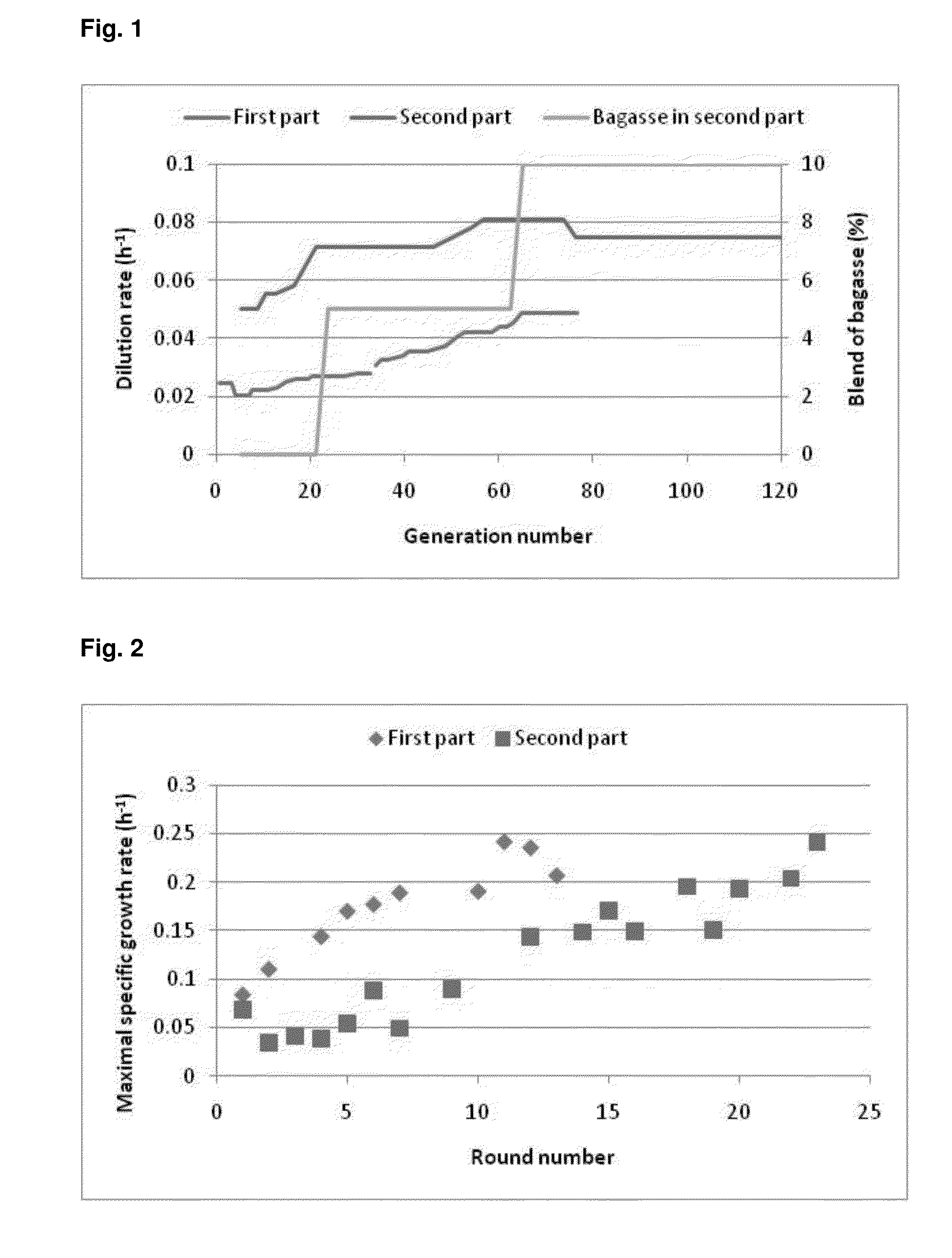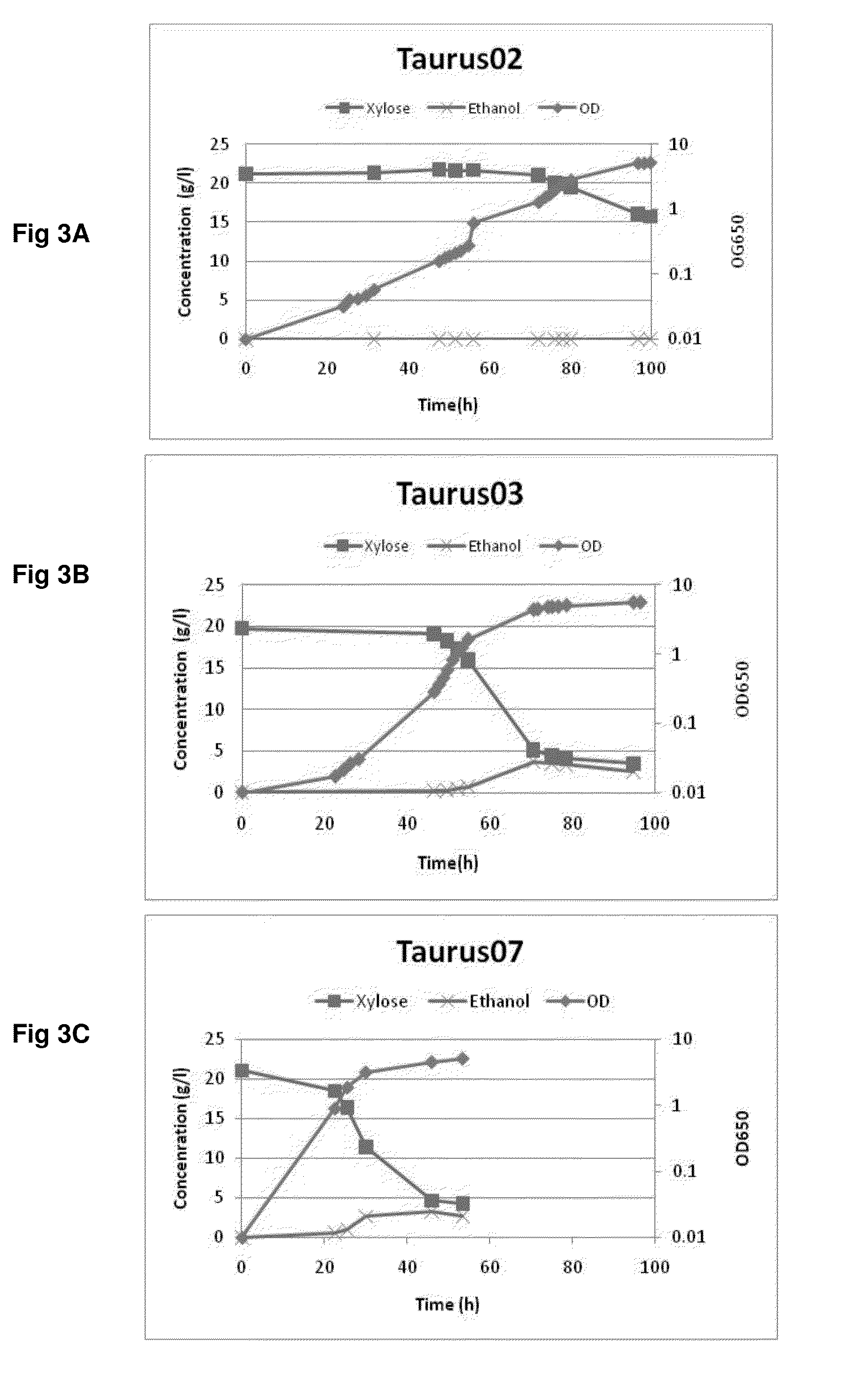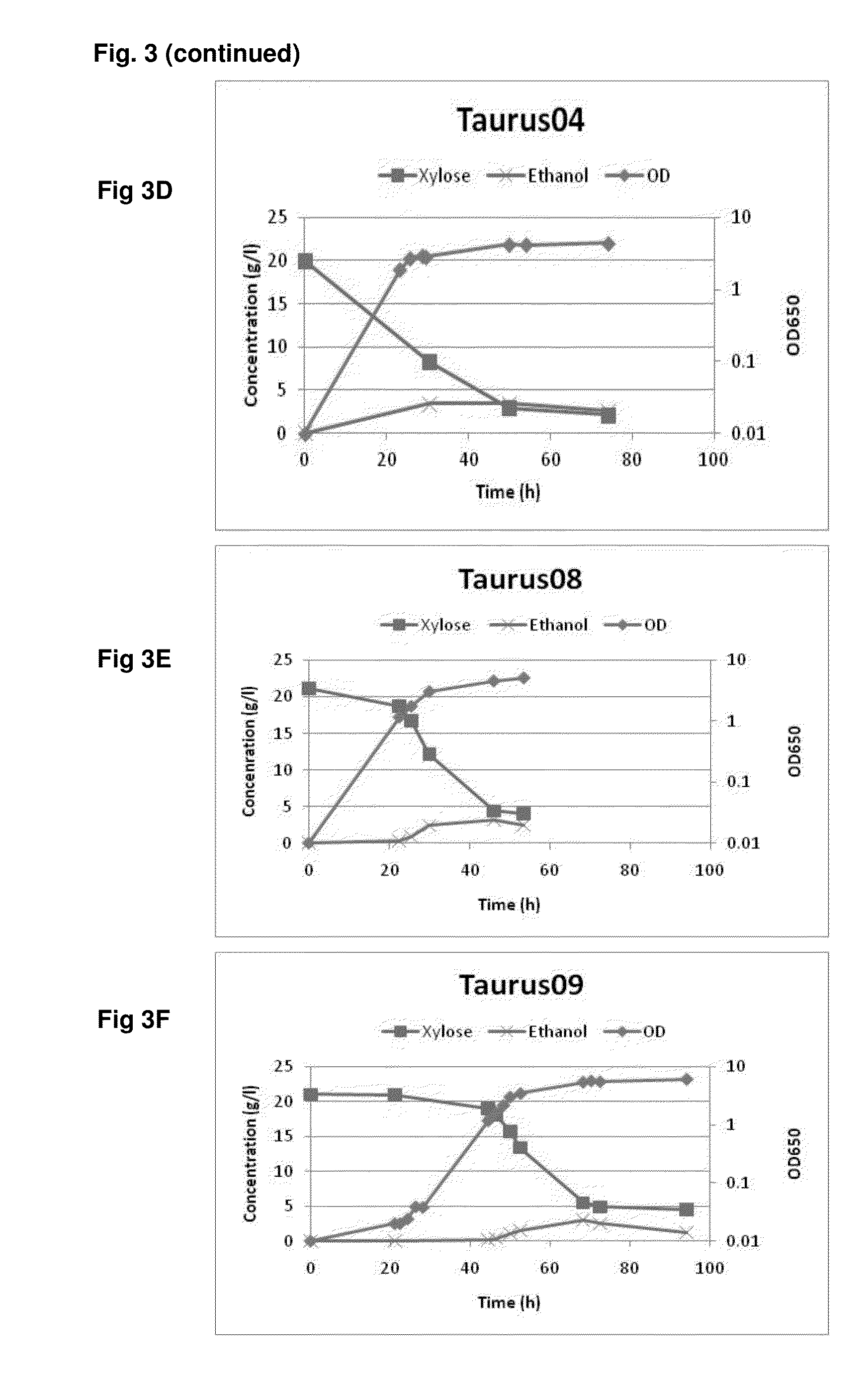Strains of saccharomyces cerevisiae
a saccharomyces cerevisiae and strain technology, applied in the field of saccharomyces cerevisiae strains, can solve the problems of inability to use pentoses, carbon sources, wild-type saccharomyces cerevisiae, etc., and achieve the effects of reducing the production of xylitol, reducing the production of xylose byproducts, and improving xylose conversion
- Summary
- Abstract
- Description
- Claims
- Application Information
AI Technical Summary
Benefits of technology
Problems solved by technology
Method used
Image
Examples
example 1
Improvement of Xylose Conversion Capacity and Inhibitor and Temperature Tolerance Using Continuous Cultures
[0064]The directed adaptation series was started with strain Taurus01 and performed in continuous cultures in a bioreactor (approx. 750 ml working volume of 1 l, Belach Bioteknik AB, Sweden) with minimal medium (Verduyn, et al., 1992) with 2 times higher trace metal solution than used according to Verduyn and 0.1 ml / l of PEG P2000 as antifoam (in bioreactor cultivations). The pH was controlled at 5.0 with 2M NaOH and stirrer speed was set at 350 rpm. For starting the culture a 50 ml inoculum with 20 g / l xylose and 20 g / l glucose (in 250 ml baffled shake flask, incubated for 24-36 h, 30° C., shaking 180 rpm) was added to the bioreactor (with minimal medium and 20 g / l xylose and 20 g / l glucose, total volume 800 ml, no gas inflow). The culture was run for 15-20 h before the continuous mode was started with inflowing medium having only 20 g / l xylose as carbon source and an overflow...
example 2
Improvement of Xylose Conversion Capacity Using Repetitive Shake Flask Cultures
[0068]The Taurus02 strain, which is developed from TMB3400 (Taurus01) was used as the starting strain for a directed adaptation scheme using repetitive batch cultures. The cultivations were done in shake flask cultures at 30° C. with an agitation of 180 rpm in 100 ml flasks with 50 ml of minimal xylose medium (Verduyn, et al., 1992) with pH 5.5 and 2 times higher trace metal solution than used according to Verduyn. The first part of the adaptation scheme was done with 20 g / l xylose in the medium. Each culture was run until the optical density at 650 nm (OD) reached a value of 1.8-3 when growth started to cease and then an aliquot of cells were transferred to the flask of next round with fresh medium to give a start OD of 0.07. In round 7, the performance was improved to such a degree that the start OD was decreased to 0.06 for round 8, 0.05 for rounds 9-10 and approx 0.02 for rounds 11-13. In total, 13 cu...
example 3
Characterization of Strains Regarding Xylose Fermentation Capacity at Different Conditions
[0071]a) Shake Flask Cultures with Minimal Medium and Xylose as Only Carbon Source
[0072]The first type of characterisation applied was shake flask cultures with minimal medium and only xylose as carbon source. The cultivations were performed in 50 ml medium in 100 ml flasks and started by adding cells from a frozen stock to obtain an OD of 0.01. The cultures were incubated at 30° C. and 180 rpm, which results in semiaerobic conditions in the flasks, and the cells and metabolite concentrations were followed.
[0073]Strains on which this type of characterisation was conducted:
[0074]Taurus02
[0075]Taurus03
[0076]Taurus07
[0077]Taurus08
[0078]Taurus09
[0079]Taurus10
[0080]A faster maximal specific growth rate was achieved already for the first generation of xylose strains from both types of directed evolution schemes, Taurus03 and Taurus09, and was only marginally improved for the second generation of xylo...
PUM
| Property | Measurement | Unit |
|---|---|---|
| temperature | aaaaa | aaaaa |
| temperature | aaaaa | aaaaa |
| temperature | aaaaa | aaaaa |
Abstract
Description
Claims
Application Information
 Login to View More
Login to View More - R&D
- Intellectual Property
- Life Sciences
- Materials
- Tech Scout
- Unparalleled Data Quality
- Higher Quality Content
- 60% Fewer Hallucinations
Browse by: Latest US Patents, China's latest patents, Technical Efficacy Thesaurus, Application Domain, Technology Topic, Popular Technical Reports.
© 2025 PatSnap. All rights reserved.Legal|Privacy policy|Modern Slavery Act Transparency Statement|Sitemap|About US| Contact US: help@patsnap.com



